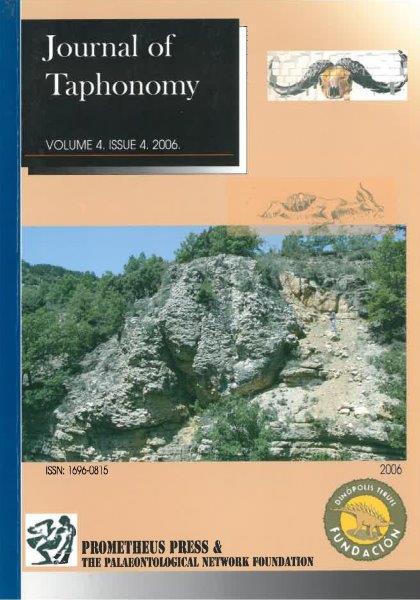Eighty percent of 74 fragmentary cranial and postcranial bones of the Upper Pleistocene woolly rhinoceros Coelodonta antiquitatis (BLUMENBACH 1799) from the Lower Weichselian (65.000-90.000 BP, OIS 5, Upper Pleistocene) ice age spotted hyena open air prey deposit site Biedensteg at Bad Wildungen (Hessia, NW-Germany) exhibit crack, bite and nibbling marks. The skeletal remains represent at least five woolly rhinoceros individuals. Individual carcasses of an early adult female and a calf have been identified. Both show carcass disrupting and destruction by the hyenas in form of partly articulated bones, bone cracking, nibbling and chewing. Articulated parts of the skeletons were removed from the carcass and were stored in mud pits with other prey bones. The long bones, which are filled completely by the bone spongiosa, were generally not cracked, but are always gnawn intensively starting from the joints, while the hyenas mostly left the bone shaft intact. Such bone spongiosa was also not uncommon in hyena coprolites at the site. Typical bone destruction stages are represented. Those described in detail here include the cranium, scapula, humerus, ulna, radius, femur, tibia, pelvis but also vertebrae and costae. The woolly rhinoceros bones at the Bad Wildungen-Biedensteg freeland prey deposit site take 53% of the prey animal bones of Crocuta crocuta spelaea (Goldfuss 1823) and prove with other prey bones a mixed feeding onto all huge ice age mammals. Remains of Mammuthus antiquitatis, Bison priscus, Equus ferus przewalskii, Megaloceros giganteus, Rangifer tarandus, Ursus spelaeus and C. c. spelaea itself are included in the hyeana-modified fauna with 5-12% each showing signs of scavenging. The high percentage of the Coelodonta bones results more of the fact, that those are, such as mammoth bones, the most massive ones of ice age animals. The taphonomic comparison of C. antiquitatis carcasses and bones of Westphalian cave and freeland hyena den and prey deposit sites indicate the most important destruction impact of woolly rhinoceros carcasses by the Upper Pleistocene spotted hyena.


